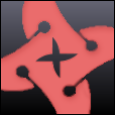K2000 - Scripted OS: What is the best method to add desktop shortcuts?
Windows only (v7Sp1 only at this time)
This question has been asked before. I'm checking if there are new options I haven't found yet. I'm testing with Shortcut.exe right now, but haven't found a reliable method yet.
I'd like use a post install task to create shortcut icons on the desktop that link to URL's to download Flash, Shockwave, etc. We don't want to deploy these apps as PostInstall tasks because they update so frequently and we had to disable our K1000's patching of these items due to other issues.
Example:
Adobe Flash for IE would point to: http://get.adobe.com/flashplayer/download/?installer=Flash_Player_11_for_Internet_Explorer&os=Windows 7&browser_type=MSIE&browser_dist=OEM
ALTERNATE OPTION??:
If creating the shortcuts is more trouble than it's worth, I'd be ok with creating a document (word or HTML etc) on the All Users desktop that has links to each of the downloads. I'm not sure how I would get that done with the K2000.
Answers (4)
Are you trying to automate their installs/updates. Make them easily accessible to techs. Or make it where end users can update as they need by themselves? If it's not the first option. I would use your K1000's Software Management Center. I usually don't trust my end users to do anything but I'll put up packages with updates disabled, the correct flavor of Reader, etc into my K1000 for my techs to access on any machine.
Comments:
-
Not for end users, no way Sir-e-Bob! I don't have the time to update new software in actual post install tasks, or even update the packages if I put them on our K1000. Ideally, creating pointers to the URL's for the current versions and putting them on the desktop as soon as a K2000 Scripted OS install completes would sort of force the techs to install the current version. - murbot 10 years ago
-
One thing we do, is create a label for these software installers. Set our subscription settings to download those installers. We also set new patches to join the Kbox as inactive. I then have a report that tells me when new inactive patches have joined that fall into my label. This report runs everyday, but only runs if results are present. Once I get this report I simply go to it in the Kbox, and click activate that way nothing sneaks in.
I should also add that I have two separate labels. One for new (untested) patches, and one for PROD (tested patches) based off of the release date. That way these installers go to testing prior to deployment.
After this is should then just be a matter of creating a label that will deploy these "tested" patches to your new imaged machines. This way you do not have to update so often. - dugullett 10 years ago-
... and if you still want to use the shortcuts.
Create them all. ZIP them up with a .cmd that copies them to %public%\desktop. Upload that as a post install calling your .cmd file. - dugullett 10 years ago
You should use KACE to install them onto the computer, if your do a stock install it will do the self updating out of the box. No that i recommend users install software!
Anyway have a look at the link below, its a VBS to create shotcuts etc, hopefully do what you need.
Ok totally different method. And for the record I feel dirty for mentioning this.
If your goal is for techs to install them once imagin is done then have them use ninite.
www.ninite.com
Ninite grabs the latest and greatest of everything you tell it to grab in a single installer, that you can use over and over. I give it to my techs for the quick and dirty so they can just get stuff done. One of my techs even built an image that auto ran it.
While I don't consider it best practice. This will do exactly what you want but better.
We do something like this in principle, we have a shortcut placed on the desktop that points to a network share where people can place items. Then you can put all your installs inside of that share and update it as often as you want. It's as simple as putting the shortcut in C:\Users\Public\Desktop.




